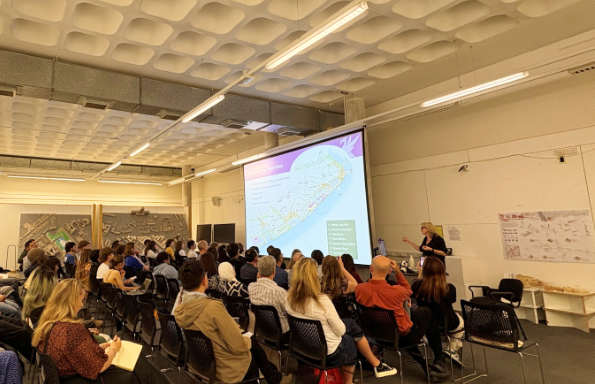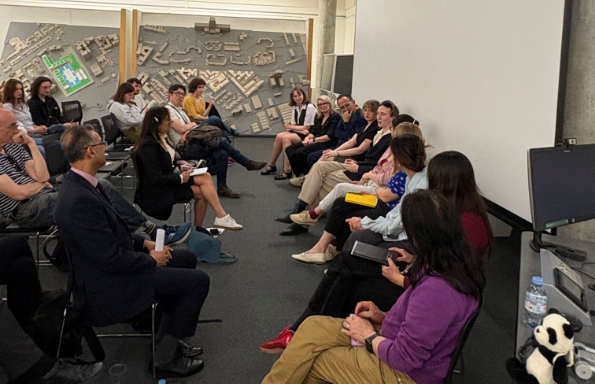Liverpool’s Chinatown: An Urban Dialogue

On the 28th April, the School of Architecture hosted an exciting event that created a dialogue between students and the Liverpool City Council. This semester, second-year undergraduate and graduate students have been designing urban and architectural strategies to revitalise the area around Liverpool’s Chinatown and its connection to the waterfront. The area is strategically important for articulating the connection between Liverpool’s city centre, Chinatown and the Baltic Triangle, an importance already acknowledged by the City Council through the recent land acquisition for the new Chinatown and the construction of the new Baltic railway station in the area.
As part of this public interest, Nuala Gallagher, the Corporate Director of City Development at Liverpool City Council, joined by Kate Bull (Director of Economic Strategy, Skills and Sustainability), Mi Tang (Business and Economic Support Manager) presented the city council’s development plans, focusing on the Chinatown area. A group of students followed Nuala’s presentation by presenting their urban and architectural proposal. Moderated by Dr Paco Mejias, a dialogue opened among the presenters and audience to discuss the students’ ideas, the City Council’s vision and their commonalities and differences. The director of Pagoda Arts, local community leader, Ms Zilan Liao, also joined the conversation. When asked “what is your vision of the future Chinatown?”, one student said: a place to represent the contemporary Chinese communities”.

Panel discussion
Dr Junjie Xi commented that the event also brought together colleagues from other departments such as Planning, Music and Business. It is at the heart of the Community Design Research Cluster to create a multidisciplinary platform to promote research-led design that can benefit the local communities in Liverpool.

Students showing their models
During the closing speech, Professor Tariq Ali, Pro-Vice-Chancellor for Global Engagement & Partnerships, applauded the students’ bravery for the presentations and emphasised how the event provided a unique opportunity for the students to be equal presenters from the City Council and expressed their vision for the future of Liverpool City.
We all look forward to seeing a brighter future for Chinatown, Liverpool.